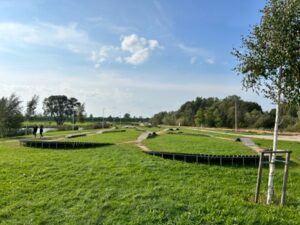Transforming Urban Environments and Sporting Opportunities
Job Overview

Transforming Urban Environments and Sporting Opportunities
Transforming Urban Environments and Sporting Opportunities
Urbanization has a huge impact on sports infrastructure development and accessibility, as melbet-bf.com, but at larger scales, such as cities or neighborhoods, this relationship remains poorly understood.
Japan has introduced the concept of everyday activity districts (Machizukuri), which create villages within cities where residents can walk to grocery stores, post offices, libraries, and sports facilities. Let’s look at the main points further.
Sidewalks and Public Spaces
Public spaces play an essential role in shaping a city’s physical environment and can contribute significantly to community’s character and sense of place. Furthermore, great public spaces can help improve both socioeconomic conditions.
Public spaces include outdoor areas like beaches, parks and other green spaces as well as pavements and squares, but can also take the form of museums, libraries and cultural facilities in an apartment building, shopping mall or school courtyards.
Typically, sidewalks are required on urban arterial, collector and most local roadways to help separate pedestrians from vehicular traffic. Unfortunately, however, sidewalks often become overcrowded with people, which hinders their pedestrian experience and can result in unintended interventions and policies being put in place that make navigating them even harder.
McCay emphasizes the need to design public spaces around a clear understanding of user needs and wants. A pedestrian environment might, for example, include “Daily Activities Areas,” similar to Japan’s concept of Machizukuri. These would provide local residents with various amenities like supermarkets, libraries, health clinics and social clubs – like these examples from Japan!
Converting Office Spaces to Residential Spaces
Urban communities across the nation are eager to use vacant commercial spaces as empty residential housing units, in order to increase residential population, assist struggling building owners, and address national housing shortage. But creating homes from office spaces requires extensive renovations that take considerable time and money for completion.
Cities across the nation are taking steps to speed up office-to-home conversion processes by offering financial incentives such as tax abatement programs that encourage office-to-home conversions, which in turn can lower construction costs and the environmental footprint of projects.
Converting office buildings into homes isn’t simple, even with incentives in place; for instance, due to limited windows in most office buildings it can be hard to provide enough natural light in living spaces and plumbing can often pose significant costs and disruptions.
Yet despite its challenges, there are numerous advantages to turning offices into housing. One is the sense of community created when residents no longer only work there but live there as well – not to mention socialize – along with increased flexibility of urban living where young people play sports such as 3×3 basketball or small-sided street soccer on compact courts or pitches, providing young people a new interpretation of how young players have long organized games wherever there is space available to them.
Reimagining Streetscapes
As cities become more accustomed to hosting sporting events, the streetscapes in these centers are redefining how we think about public space. Streetscape spaces can communicate a city’s cultural dispensations and serve as social hubs for residents. They also play a critical role as physical transport routes and offer opportunities for exercise.
Cities are reimagining their streets to prioritize pedestrian spaces and improve non-motorized transportation infrastructure. They are incorporating green elements to cool ambient air temperatures, control flooding, manage water flow, and promote sustainability. Some cities are even connecting parks through green corridors that offer a safe way for residents to enjoy the outdoors without having to drive their cars.
Streetscapes that are well-designed are aesthetically appealing and encourage social interaction. They can include paved walkways, shade trees and benches, street furniture, and bike lanes that are accessible for people with disabilities. Including residents in the process of creating these spaces helps ensure that the designs are representative of their interests and needs. Studies show that when residents feel invested in a space, they are more likely to visit it regularly and support its businesses. This can foster a sense of ownership that benefits the entire community. It can also lead to new ways for sports and urbanism to intersect. For example, a recent startup that has recruited recreational runners to transport morning pastries has created an opportunity for them to earn money while promoting a healthier lifestyle.
Creating a Community
FEA process participants shared that sustainable urban development was a central shift required to achieve the SDGs and other national goals, including reducing climate change impacts, fostering social cohesion, increasing wellbeing and providing jobs and infrastructure (CSIRO 2019). This requires more than just changing existing practice. It also requires rethinking how we understand and shape the world around us.
The participants’ inputs emphasized that transforming the urban environment can be used as a tool for developing community cohesion and engagement in physical activities like sports. This is particularly important for youth with varying abilities who often cannot access the same opportunities as their peers due to financial barriers, lack of accessibility to facilities or other limitations. Several delegates noted that cities are already implementing programs to increase sports participation and accessibility, such as Los Angeles’ Play Equity programs which provide low or no cost programming and adaptive sport equipment for youth with various disabilities.
The delegates also highlighted the need for cities to share their learning about urban transformation with each other, and called on government agencies to make integrating urban systems thinking a priority in policy-making and resource allocation. The FEA process was designed to produce convergent and cumulative frameworks that could be applied to mission-focused urban transformation processes on local, city-region and national scales. These frameworks vary along key descriptors, but have the potential to generate complementary insights in supporting urban system transformations.



